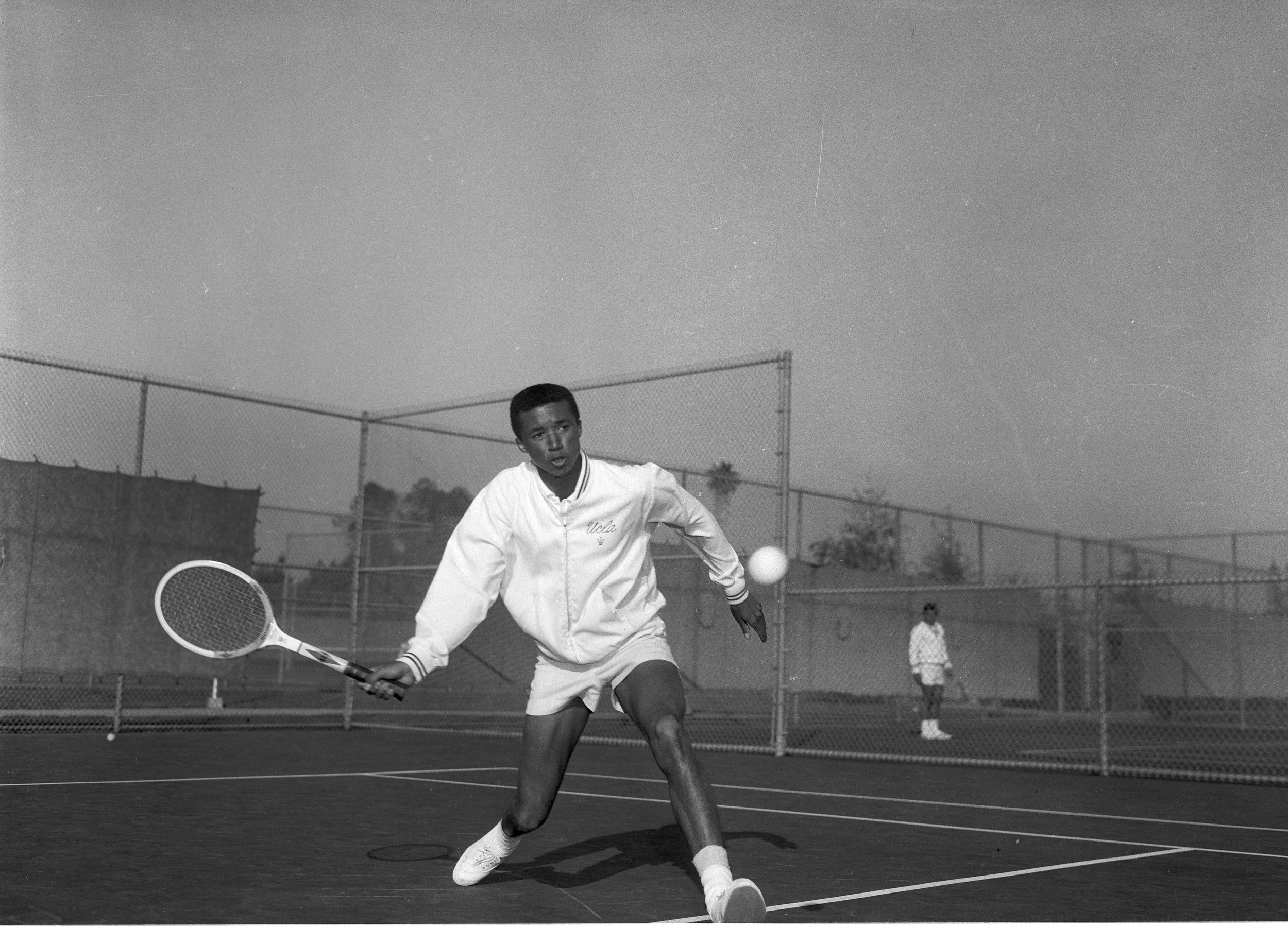Arthur Ashe Stadium
ASUCLA Photography
The Arthur Ashe Stadium is named after the UCLA alumnus ‘66 Arthur Ashe. Arthur Ashe is known for his legacy as a professional tennis player, activist and United States Army Veteran. To learn more about Arthur Ashe, keep reading or click the link below for the Arthur Ashe Stadium venue information.
The Arthur Ashe Stadium is located in the United States Tennis Association (USTA) Billie Jean King National Tennis Center (NTC) in New York City. The USTA Billie Jean King NTC stadiums webpage notes that the Arthur Ashe USTA Stadium is the largest tennis stadium in the world, with an Arthur Ashe Stadium seating chart of 23,000 seats available, holding concerts, athletic events and more. For more information about the Arthur Ashe seating chart and arena, click the link below.
The Arthur Ashe Stadium honors the legacy of Arthur Ashe. A UCLA Tennis player, Arthur Ashe won the singles title in the 1965 National Collegiate Athletic Association (NCAA) Championship; he also contributed to the UCLA team’s NCAA win then as well. Arthur Ashe graduated from UCLA in 1966 with a business administration degree, according to an Arthur Ashe Student Health and Wellness Center (The Ashe Center) webpage.
Ashe’s successes as a tennis player continued into his professional career, earning three grand slam singles titles. Ashe also became the first and only Black man to win the Wimbledon singles title in 1975.
Named in Arthur Ashe’s honor, the Ashe Center at UCLA offers students healthcare and education, from primary care to physical therapy. The Ashe Center is located in the middle of UCLA’s campus, with services also in Ackerman Union including the U See LA Optometry center and the Bruin Health Pharmacy. To learn more about the Ashe Center, click the link below.
To learn more about Arthur Ashe via the Ashe Center, click the link below.
Another facility that honors the legacy of Arthur Ashe is the Arthur Ashe Learning Center, which shares the Arthur Ashe Legacy at UCLA webpage and offers scholarships, internships and a history project of Ashe’s legacy. To learn more about Arthur Ashe via the Arthur Ashe Learning Center, click the link below.


